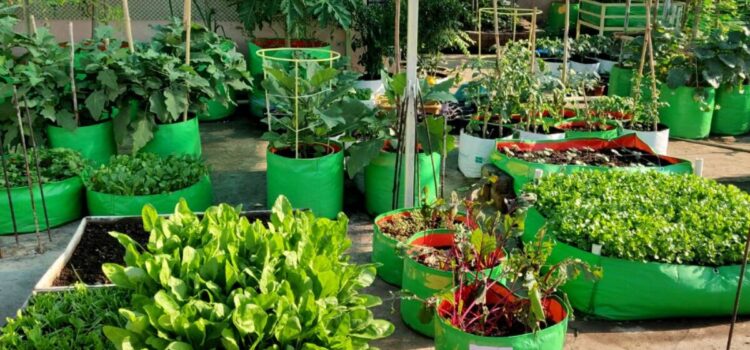Save Money with Growing Kitchen Garden Inside Your House
Developing a kitchen garden inside your house in the city is a great way to grow fresh herbs, vegetables, and even some fruits. Here’s a step-by-step guide to help you get started:
1. Assess available space:
Determine how much space you can allocate for your indoor kitchen garden. It can be a windowsill, a corner of your kitchen, or even a dedicated room with grow lights.
2. Choose suitable plants:
Select plants that are suitable for indoor gardening and fit well in your available space. Herbs like basil, mint, parsley, and thyme are popular choices. Leafy greens such as lettuce, spinach, and kale are also good options. You can also consider compact varieties of tomatoes, peppers, and strawberries.
3. Consider lighting:
Adequate lighting is crucial for indoor gardening, especially if your space doesn’t receive enough natural light. If you have a sunny window, place your plants there. Otherwise, invest in artificial grow lights that provide the necessary spectrum of light for plant growth. LED grow lights are energy-efficient and work well for indoor gardening.
4. Choose containers:
Select appropriate containers for your plants, ensuring they have drainage holes to prevent waterlogging. You can use pots, containers, or even repurpose items like buckets, hanging baskets, or vertical wall planters. Ensure the containers are large enough to accommodate the plant’s root system.
5. Prepare the soil or growing medium
Use a well-draining soil mix or a suitable growing medium for your indoor garden. You can create a mix of potting soil, compost, and vermiculite or perlite for better drainage and aeration. Alternatively, consider hydroponics or aquaponics systems for soil-less gardening.
6. Plant your garden:
Follow the planting instructions for each specific plant, considering factors like spacing and depth. Transplant seedlings or sow seeds directly into the containers. Label your plants to keep track of their progress.
7. Provide proper care:
Indoor plants require regular care and maintenance. Water your plants when the top inch of soil feels dry, but avoid overwatering. Ensure proper ventilation and airflow to prevent fungal diseases. Fertilize your plants with organic fertilizers or compost as needed. Prune regularly to maintain shape and promote growth.
8. Monitor light and temperature:
Keep an eye on the light levels and temperature in your indoor garden. Some plants require specific light durations and intensity. Maintain a comfortable temperature range suitable for the plants you’re growing.
9. Pest control:
Monitor your plants for pests like aphids, mites, or fungus gnats. Use organic pest control methods such as neem oil, insecticidal soap, or introducing beneficial insects like ladybugs. Regularly inspect your plants and take appropriate action at the first signs of infestation.
10. Harvest and enjoy:
Once your plants are mature, harvest the herbs, vegetables, and fruits as needed. Enjoy the freshness of homegrown produce in your cooking and share with friends and family.
Remember, successful indoor gardening requires patience, observation, and a bit of trial and error. Be attentive to your plants’ needs and make adjustments accordingly. With time, you’ll develop the skills and experience to create a thriving kitchen garden right inside your city home.






